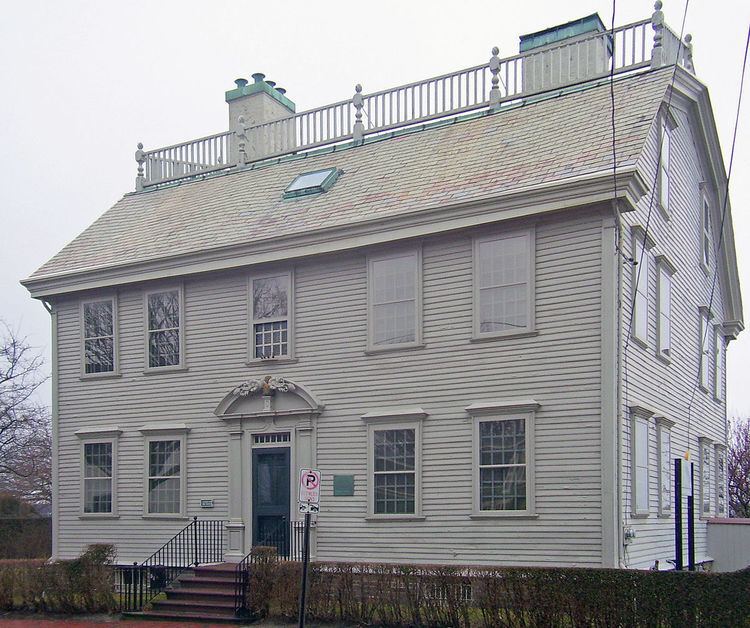Location Newport, RI NRHP Reference # 68000003 Designated NHLDCP November 24, 1968 Area 8,094 m² Phone +1 401-847-7516 | Built 1748 Designated NHL November 24, 1968 Opened 1748 Architectural style Georgian architecture Added to NRHP 24 November 1968 | |
 | ||
Address 54 Washington St, Newport, RI 02840, USA Similar Chepstow, Kingscote, Isaac Bell House, Chateau‑sur‑Mer, The Elms | ||
Hunter House (1748) is a historic house in Newport, Rhode Island. It is located at 54 Washington Street in the Easton's Point neighborhood, near the northern end of the Newport Historic District.
History
The original portion of Hunter House was built in 1748 for Colonial Deputy Governor Jonathan Nichols Jr. The architecture of Hunter House is currently Georgian Colonial. This large 2½-story house has a balustraded gambrel roof and heavy stud construction. In 1756, the property was sold to Colonel Joseph Wanton Jr., who was a deputy governor of the colony and a merchant. Wanton enlarged the house by adding a south wing and a second chimney, transforming the building into a formal Georgian mansion with a large central hall. During the American Revolution, Wanton remained a Loyalist, and General William West ordered Wanton imprisoned in Providence and tried by the legislature. Eventually, Wanton fled Newport when the British left the city. Local legend has it that when Wanton and other Loyalists were fleeing Newport, space aboard British ships were at a premium, but Wanton had his own vessel filled with goods and merchandise in preparation for what he hoped would be a short exile. however, whilst bidding farewell to his wife onshore, who was staying in Newport to look after the family's interests, his ship loaded with his worldly possessions took off northwards, up Narragansett Bay towards Providence and the rebel authorities there, with the intention of turning over the ship as a prize of war, thus gaining the vessel's captain and its crew a share of the prize money while simultaneously depriving Wanton of his wealth. Wanton will die penniless shortly thereafter in British-controlled New York City. After Wanton fled, the house was used as the headquarters of Admiral de Ternay, commander of the French fleet, when French forces occupied Newport in 1780. After the war, William Hunter, a U.S. Senator and ambassador, bought Wanton's house and transformed it into a formal Georgian mansion with a large central hall.
The house was purchased in 1945 to prevent its demolition, leading to the formation of the Preservation Society of Newport County. Hunter House was designated a National Historic Landmark on November 24, 1968. It is currently open for limited public tours, and displays period furnishings by Townsend and Goddard; paintings, including one by Gilbert Stuart; and a restored 18th-century garden.
It is also known for its woodwork, including a carved pineapple over the doorway, a symbol of welcome throughout Colonial America. During the restoration, Newport-made cabinetry from as far away as Scotland was brought back and installed in the house. "Today the visitor to Hunter House comes under the spell of a spectacular interior," says Ralph Carpenter, who supervised the furniture restoration, "with floor-to-ceiling paneling framed with bolection moldings, intricately twisted balusters on the stairs, eighteenth-century Delft tiles around many of the fireplaces, pilasters with Corinthian capitals, and marbleizing and grain painting throughout."
